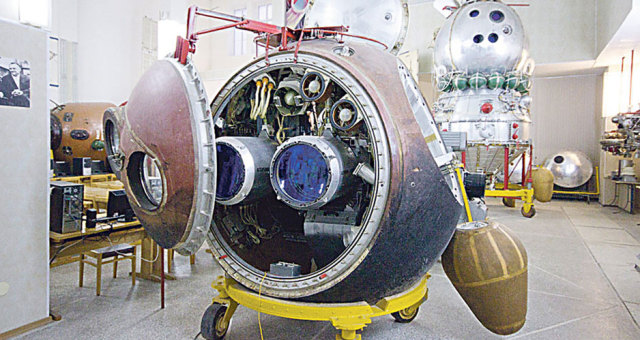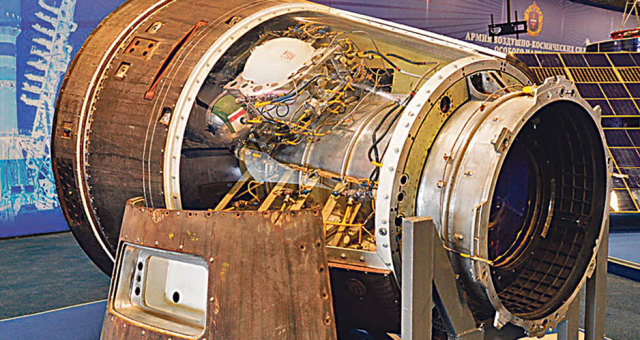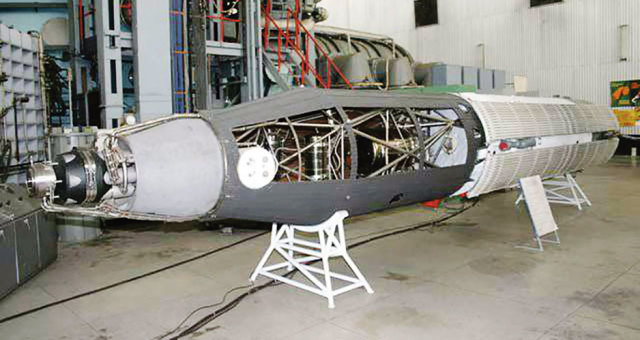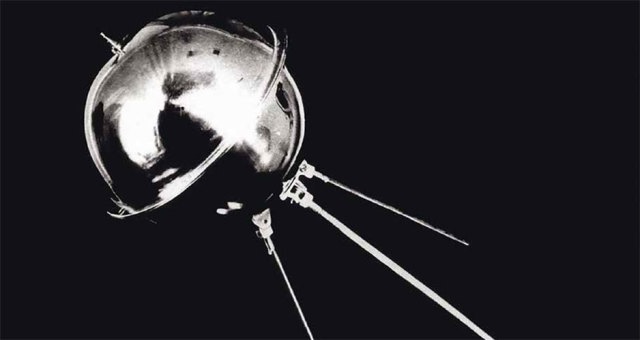60 years ago, the first satellite of the Cosmos series was launched
The concept of "series" in relation to artificial Earth satellites (ISS) "Cosmos", which in the USSR had serial numbers from 1 to 2174, is itself conditional. Under the name "Cosmos" – so they were registered in the international "space annals" – there were hidden ISS with completely different authentic names. These devices were created according to various programs for defense, dual and peaceful purposes. The launch of the Space satellite into orbit was carried out by launch vehicles of various types from different cosmodromes.
Orbital heights
ISS "Cosmos-1" had the designation DS-2. DS is a Dnepropetrovsk satellite, that is, developed in the OKB-586 of Dnepropetrovsk Yuzhmash, later the Yuzhnoye Design Bureau. This, by the way, speaks eloquently about the danger of Zelensky's stated intention to revive the creation of nuclear weapons and their means of delivery.
The DS-2 was launched on March 16, 1962. Its purpose was to work out as a payload of a light launch vehicle 63C1 (this type of rocket was also given the name "Cosmos"). But the DS-2 was not at all a simple 47-kilogram dummy in the form of an 80-centimeter ball, but played the role of a fully functional spacecraft. It was used to study the passage of radio waves in the upper atmosphere, for which the Institute of Terrestrial Magnetism, Ionosphere and Radio Wave Propagation of the USSR Academy of Sciences (IZMIRAN) was involved in this space experiment.
With the help of Kosmos-1, large ionospheric inhomogeneities were discovered for the first time in Russian science and some previously unknown characteristics of radio waves were determined. The launch of this satellite became proof of the success of the engineering solutions laid down in the design of the Kosmos-1 launch vehicle, which was a variant of the R-12 medium-range ballistic missile in service with the second "space" stage.
"The first successful test took place on November 1, 1968, when the Kosmos-252 interceptor destroyed the Kosmos-248 target satellite. In total, during the development of the anti-satellite system, 22 interceptor satellites and 17 targets were launched into near-Earth space. This system was put on combat duty in 1979”
The scientific and practical research carried out during the launches of the ISS, encrypted as "Cosmoses", was very extensive, since the altitude area and the parameters of the orbits to which they were displayed made it possible to deliver instrumentation to almost any point in near-Earth space. The Kosmos-159 spacecraft, aka E-6LS (LS – lunar communication), was launched on May 15, 1967 to an altitude of 60,600 kilometers. Its purpose was to work out a communications complex within the framework of the Soviet (alas, and unrealized) manned lunar program. And Kosmos-244 (another designation is OSB) "jumped" on October 2, 1968 to a height of only 140 kilometers – in fact, it was not necessary to go higher: it was launched as an experimental orbital stage of a partially orbital bombing system.
This program provided for the creation of an orbital (global) ballistic missile. It was capable of hitting targets anywhere on the planet from any direction by launching a megaton-class thermonuclear combat unit into space, which would fall, figuratively speaking, directly on the enemy's head from the orbit in which it was located as a satellite.
In total, about a damn dozen experimental "Kosmos" of the OSB type were launched into a circular or slightly elliptical orbit around the Earth, which made it possible to deploy and put on combat duty in 1969 a regiment of the RVSN with 18 orbital R-36 orb ICBMs in mine launchers (at one of the sites of the Baikonur cosmodrome). The system was liquidated in the early 80s in accordance with the Soviet-American OSV-2 Treaty. By the way, the Americans did not have such a strategic weapon at all.
Here we can mention, for example, the first domestic space photo-reconnaissance system on the Zenit-2 family of satellites, created on the basis of the Gagarin manned spacecraft Vostok (the first Zenit-2 satellite was launched as Kosmos-4 on April 26, 1962). As well as optical-electronic reconnaissance spacecraft of the Yantar type (Terylene satellite, the first launch under the designation Kosmos-1426 on December 28, 1982), the Comet space mapping complex (February 18, 1981, Kosmos-1246 or Silhouette satellite), the space radio engineering system exploration "Tselina" (September 28, 1984, ISS "Cosmos-1603" – "Tselina-2"), satellites for early detection of ballistic missile launches by the flare of their engines of the "Oko" system (October 22, 1976, ISS "Cosmos-862" – US-K).
Thousands of years above the earth
It is possible to mention in particular the maneuvering fighters of satellites of the IS series. Such an interceptor satellite was intended for single-turn (with self-targeting) or two-turn (with orbit correction based on signals from Earth on the second turn) interception of non-maneuvering space targets at altitudes from 100-120 to 1200-1350 kilometers. The destruction of the target was provided for by a warhead with shrapnel striking elements.

The Zenit-2 satellite. Photo: rocketengines.ru
The first successful test of this unique combat system took place on November 1, 1968, when the Kosmos-252 interceptor (IS) destroyed the Kosmos-248 (I-2M) target satellite. In total, during the development of the anti-satellite system, 22 interceptor satellites and 17 targets were launched into near-Earth space. This system was put on combat duty in 1979, until in 1991 it was replaced by a more advanced anti-space defense complex IS-MU, which, however, lasted in the national defense system due to the collapse of the USSR for a very short time – until 1993.
It is impossible not to touch on the nuclear-energy side of the history of the ISS "Cosmos". In the autumn of 1965, in the interests of the USSR Ministry of Defense, several special communications satellites (from Kosmos-80 to Kosmos-90) of the Strela-1 series were launched, two of which were powered by radioisotope generators operating on polonium-210. Then a much more complex onboard power source was created for the spacecraft – the miniature nuclear power plant BES-5 "Buk" provided significantly higher electrical power. The installation included a small-sized high-temperature fast neutron reactor, which ran on uranium-235, and was cooled by transferring heat to a semiconductor thermoelectric generator with a melt of potassium and sodium.

The Yantar satellite. Photo: starcatalog.ru
The work on the creation of the BES-5 was carried out in strict secrecy. Buks were to be equipped with active radar reconnaissance satellites US-A, which are part of the marine space reconnaissance and target designation system "Legend".
The first US-A satellite, which for the curious world community received the meaningless name "Cosmos-367", was launched from the Baikonur cosmodrome by a carrier rocket "Cyclone-2" on October 3, 1970. In total, by 1988, more than three dozen such very advanced spacecraft for their time were launched. However, the first launches until 1975, when the Legend was adopted, were test launches. US-A was taught to fly and brought to mind.

ISS US-A. Photo: alternathistory.com
The US-A satellite tracked ship groupings of a likely enemy in the World Ocean, primarily American aircraft carrier strike groups. In synthesis with the nuclear missile submarines of projects 949 and 949A (which received the nickname "Oscar" in NATO, and among our naval wits – "Baton"), the Legend system, which gave them the exact coordinates and other parameters of surface targets, was a unique reconnaissance and strike missile-nuclear ocean-space complex. Moreover, it was nuclear "along the entire vertical" – nuclear reactors on submarines, satellites and nuclear warheads on cruise supersonic missiles "Granite", with which submarines were armed.
In modern Russia, "Cosmoses" for various purposes continued to be launched in the post-Soviet era. It is quite possible that some of the devices of this diverse series will continue to exist, having already completed their mission. Their age is long. For example, Kosmos-80, which is spinning above the Earth at an altitude of 1,500 kilometers, will remain an orbital monument of Soviet space thought for another 10 thousand years. A good example of the reliability of products of the Soviet military-industrial complex.
Konstantin Chuprin
The newspaper "Military-Industrial Courier", published in issue No. 11 (924) for March 29, 2022

